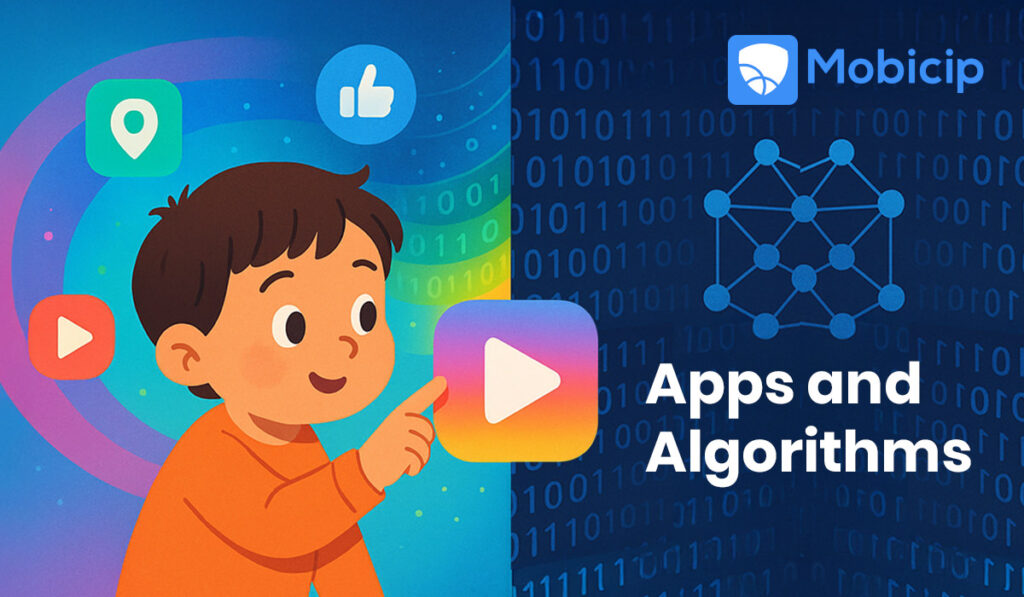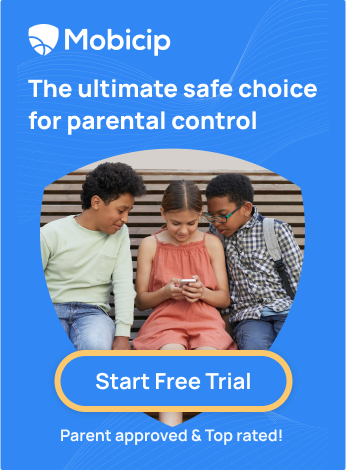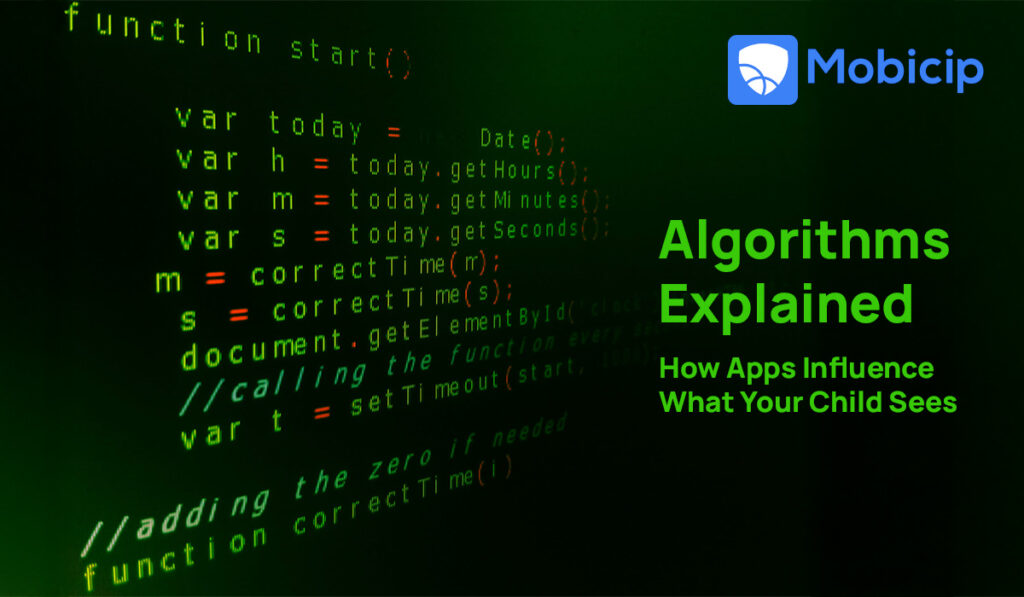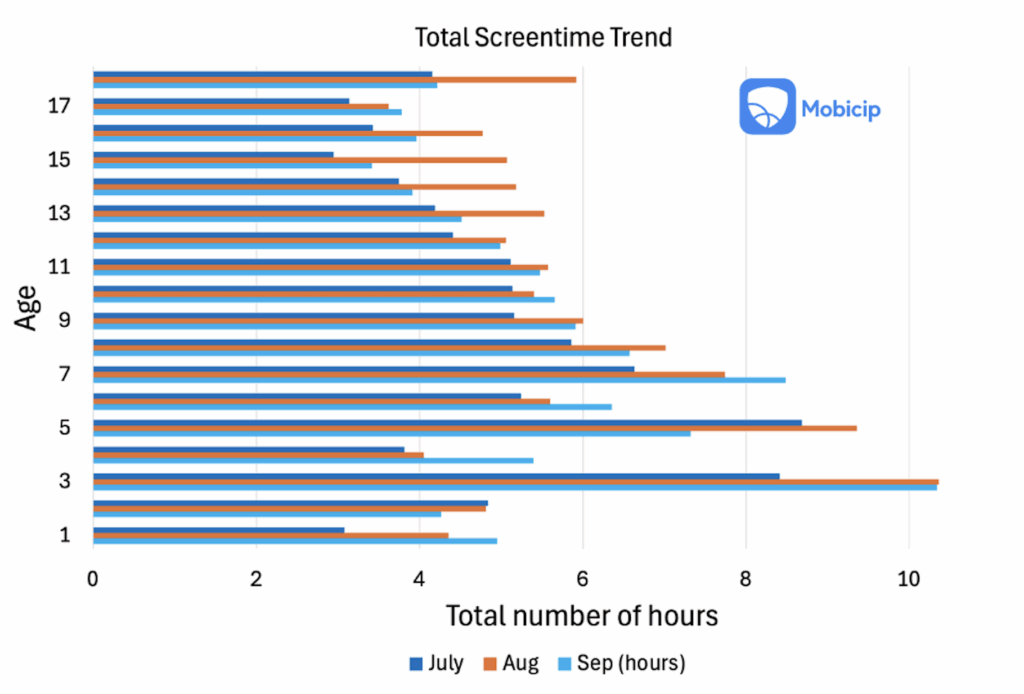Behind the Screens: How Apps and Algorithms Shape Your Child

When your child uses an app, they’re not just tapping buttons on a screen. They’re interacting with a complex system of data collection, algorithms, and design choices that shape what they see and do. Every click, swipe, and pause sends information back to the app’s servers, where powerful machine learning models analyze patterns and make predictions about what will keep your child engaged. These aren’t random suggestions or innocent game levels. They’re carefully optimized outputs of algorithms designed to capture attention and encourage longer use. On the surface, your child might simply be watching funny videos, chatting with friends, or playing a game, but under the hood the app is learning about them in real time. By understanding what’s really happening behind the screen, parents can better guide their kids’ digital habits, recognize potential risks, and teach them to think critically about the apps they use every day.
How Apps Learn About Your Child
When a child opens an app, it doesn’t just show content. It starts collecting information about the device, the user, and their behavior. This data is critical for algorithms that personalize recommendations, optimize engagement, and deliver targeted ads. The types of information collected typically include:
- Device information: location, IP address, device type, operating system version, and battery status.
- Usage patterns: clicks, swipes, pauses, rewinds, session length, and navigation paths.
- Profile information: usernames, age, preferences, and any account details entered.
A big part of how this data is collected relies on Software Development Kits (SDKs) and Application Programming Interfaces (APIs).
Software Development Kits (SDKs)
SDKs are packages of pre-written code that developers include in their apps to provide specific functionalities, like analytics, advertising, or social media integration. For example, an analytics SDK can automatically track every tap or swipe and send this information back to servers. Some modern SDKs also integrate AI models that preprocess data locally, identifying patterns in behavior before sending summaries to the server. This reduces data load while still enabling personalized recommendations.
Application Programming Interfaces (APIs)
APIs are sets of rules that allow the app to communicate with external servers and services. When your child interacts with an app, the API handles sending and receiving structured data packets—like which video they watched or how long they paused a game.
Some APIs also incorporate AI-driven services, such as predictive analytics or content ranking. These use the data in real time to decide what the app should show next. By combining SDKs and APIs, apps can continuously learn from user behavior, adapting experiences and targeting content in ways that feel seamless—but are powered by sophisticated technical systems working behind the scenes.
In essence, every tap, scroll, or pause is recorded and interpreted by an automated system. This continuous stream of data allows apps to learn not just what your child is doing, but what they are likely to do next—forming the basis for personalized recommendations, targeted ads, and engagement-driven design.
How Algorithms in Apps Shape Your Child’s Experience
After an app collects data, algorithms take the lead in deciding what your child sees and interacts with. Think of algorithms as decision engines that use past behavior to predict what will keep a user engaged. They continuously analyze patterns, rank content, and decide which ads to show. Key types include:
- Recommendation algorithms: Suggest “more of what your child likes” by comparing behavior with other users and content preferences. Collaborative filtering and deep learning models help anticipate which videos, games, or posts are most appealing.
- Ranking algorithms: Determine the order of content so the most engaging items appear first, encouraging longer sessions.
- Ad-targeting algorithms: Match ads to the child’s interests based on behavioral and profile data, maximizing engagement.
AI and Machine Learning in Action
These algorithms rely on AI and machine learning models to learn from patterns of user behavior. Some key types include:
- Neural networks: Modeled loosely on the human brain, these systems have layers of nodes (“neurons”) that detect complex patterns in data. They can recognize subtle preferences in what your child clicks, watches, or plays.
- Decision trees: Break choices down into a series of “if-then” decisions based on past actions. This helps predict which content the child is likely to engage with next.
- Gradient boosting systems: Combine many small decision trees to improve prediction accuracy, correcting errors step by step for precise recommendations.
- Reinforcement learning models: Learn through trial and error, optimizing the app’s actions (like which notifications to send or which video to show next).
- Clustering algorithms: Group users or content into clusters with similar behavior or preferences. This allows apps to recommend items popular within a cluster.
- Natural language processing (NLP): Understands and interprets text, captions, or chat messages. This helps to suggest relevant content, moderate interactions, or target ads.
- Computer vision models: Analyze images or video frames to detect objects, faces, or content themes, which can feed into recommendations or filtering.
Many of these models adapt in real time, continuously updating recommendations as your child interacts with the app. Together, they create a highly personalized and attention-optimized experience.
How Design Nudges Your Child’s Behavior
Beyond algorithms, apps use design features to shape how children interact and engage. These features are based on principles from behavioral psychology, reinforcement learning, and UX design. Examples include:
- Infinite scroll: Encourages longer sessions by continuously loading content, using reward cycles that trigger dopamine responses.
- Notifications: Timed alerts nudge the child to return to the app at specific intervals. Often when engagement is likely to be highest.
- Gamification: Points, badges, challenges, and progress bars create small reward loops that motivate continued play or interaction.
- Personalized prompts: Messages or pop-ups tailored to the child’s past behavior encourage specific actions, like watching another video or trying a new game level.
AI and Behavioral Science in Action
Apps increasingly combine AI and behavioral science to optimize these design nudges:
- Reinforcement learning models: Test different designs and notification timings, learning which actions maximize engagement over time.
- A/B testing frameworks: Compare multiple versions of a layout, color, or prompt to see which performs best, updating automatically based on user response.
- Predictive analytics: Forecast when a child is likely to stop engaging and proactively adjust content, notifications, or rewards to maintain attention.
- Attention modeling: AI tracks interaction patterns to identify moments of high interest or distraction, shaping future content presentation and reward timing.
How Apps Monetize Attention
Many apps are free to use, but they monetize the attention of users, especially children, through advertising and engagement-driven strategies. Every tap, swipe, or video view contributes to a data stream that feeds the app’s revenue model. Key mechanisms include:
- Targeted advertising: Ads are shown based on the child’s behavior, preferences, and profile data. This increases the likelihood of clicks or interactions.
- Real-time bidding (RTB): Advertisers compete in milliseconds to show ads to a specific user. For this, the child’s data is used to bid for attention.
- In-app purchases and subscriptions: Recommendations, prompts, and reward loops encourage microtransactions or premium content purchases.
AI and Programmatic Advertising in Action
Apps use AI and automated systems to optimize monetization:
- Predictive targeting: Machine learning models predict which ads are most likely to engage the child, based on past behavior.
- Programmatic platforms: Automated systems handle real-time auctions, matching behavioral data packets with advertisers instantly.
- Dynamic content personalization: AI adjusts not only which ads are shown but also when and how, maximizing engagement and revenue.
- Fraud detection and optimization: AI identifies low-quality traffic or accidental clicks, ensuring advertisers reach genuine users effectively.
Conclusion – Turning Insight into Action
The digital world can feel like a maze. But understanding how apps influence attention gives parents the tools to guide their children. While data collection, recommendation systems, and persuasive design can create risks—like privacy concerns, addictive content, or longer screen time—parents are not powerless. By talking openly with kids about how apps work, encouraging them to think critically, and asking reflective questions like “Why do you think the app suggested this?” families can turn screen time into a learning opportunity.
Parental control tools like Mobicip amplify this empowerment, allowing parents to monitor and manage data exposure while still letting children explore safely. With these resources, parents can set healthy boundaries, foster digital awareness, and help children develop the skills to navigate online spaces responsibly.
Ultimately, the goal isn’t simply to limit screen time. The goal is to transform it into an opportunity for guidance, learning, and shared understanding. Equipped with knowledge, conversation, and supportive tools, parents can help their children thrive in the digital world with confidence and curiosity.






